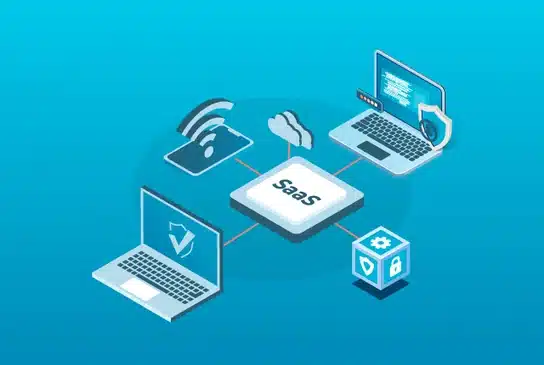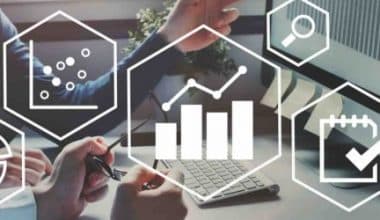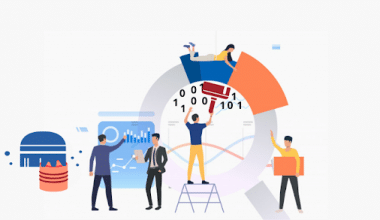Netflix, Zoom, and GitHub are all great examples of SaaS applications! Software as a service or SaaS applications have revolutionized how services operate and are delivered. However, they also bring forth various concerns that must be addressed to manage SaaS security and user data privacy effectively.
This blog will discuss the challenges of securing your product against cyber threats and the ten best SaaS security practices to keep customer data away from malicious hackers! Let’s get straight to it.
But what is SaaS Security?
If, for one moment, we assume that you own Netflix or some other mainstream SaaS application, you must ensure that the service runs smoothly. Among the many problems you will face, one major issue would be to keep the applications and customer data safe from malicious cyber attacks.
That is where SaaS security comes into play! With certain practices like data encryption, access control, user authentication, monitoring, etc. SaaS businesses, like Zoom and Spotify, can ensure that their customer data and service are protected against cyber threats. It helps improve service availability, reliability, data security, and privacy for all customers.
Source: Zippia
SaaS and Cloud breaches: Why is SaaS Security important?
The thing about SaaS applications is that they heavily rely on Cloud service providers (CSPs). Since such applications use cloud platforms to host, operate and distribute their product, any attack on the cloud infrastructure could also damage the service.
A cloud cyberattack or breach would mean that your SaaS provider would get plagued by data loss, unauthorized accesses, revenue loss, reputation damages, DDoS attacks, and every other trouble you have been trying to avoid. Therefore, implementing SaaS security best practices is crucial for your product and service to have smooth sailing.
Challenges in SaaS security
Here is a list that contains (more than) a few challenges and concerns related to SaaS security:
- Control and Access Management
Managing user access is crucial for a SaaS infrastructure because we want to limit unauthorized access while allowing all valid users to use the service/product. Therefore, this part can be tricky to control without proper user authentication techniques.
- Data Privacy issues
Ensuring complete data security and preventing data loss can be challenging due to frequent attacks on cloud hosting platforms. Data loss can also be due to accidental deletions and system failures, and we can combat this using regular backups.
- Third-party problems
Often, your SaaS application would need services from third-party businesses (i.e., payment processing, hosting, etc.). However, if the third-party application is attacked, the integration can affect your service if not vetted, tested, and monitored.
- Continuous monitoring
SaaS providers must invest in continuous monitoring to catch and mitigate SaaS security attacks early. However, frequent regulations and monitoring can be challenging and require significant resources.
- Limited control
With SaaS applications, users have to trust the providers with their data since they do not have direct control over it. And since most of it is managed by the service providers, users must let go of some of that control.
- Vulnerabilities and threats
Managing a SaaS application can be difficult due to various attacks being carried out by hackers to exploit service vulnerabilities. This poses a considerable challenge in managing data security for a SaaS application,
- Education data security awareness
Training your employees regarding service security can significantly enhance your fighting chances. Saas application can even struggle due to unintentional insider leaks, which can be effectively dealt with by training employees to avoid occasional slip-ups.
- Rapid growth and scaling
Using the cloud for hosting your SaaS apps has various benefits. And it allows you to manage service distributions, scaling, and product growth. However, rapid growth can leave behind vulnerabilities that must be managed more effectively.
- Vulnerabilities and threats
Managing a SaaS application can be difficult due to various attacks being carried out by hackers to exploit service vulnerabilities. This poses a considerable challenge in managing data security for a SaaS application,
Top 10 SaaS Security Best Practices
Here are some of the SaaS security best practices you can implement to get a more protected and secure experience with the SaaS application:
- Advanced data encryption
Encrypted data is essential to protect customer information against snooping and other forms of interception. It prevents sensitive records and details from getting compromised if a data breach is attempted.
- Security testing
Regular testing and security audits are necessary to ensure the SaaS application is secure against external and internal threats. These penetration tests help keep systems up-to-date and identify potential vulnerabilities that can be patched up before any hacker thinks of exploiting them.
- Role-Based Access Management
RBAC, or role-based access control, manages employee and user logins to limit access to sensitive information. This way, if a user does not need some information, it will not be accessible. Access should be monitored and updated to help prevent unauthorized access.
- Data deletion
A SaaS infrastructure needs proper policies to avoid security hazards in case of data loss. Regular backups and data recovery need to be in place to ensure the service continues running smoothly.
- Incident management
SaaS providers should spend both time and resources to develop proper incident management policies to ensure that, in case of a security breach or attack, the situation is addressed and the problem is mitigated effectively. Having a solid incident response plan always helps!
- Secure SaaS development
Regarding SaaS development, we must implement code using secure coding practices to limit the number of vulnerabilities introduced in the system at this stage.
- Monitoring
With continuous SaaS application monitoring, you can detect suspicious activity in real-time. This can save businesses a lot of effort and stress because they can see and mitigate threats before they become threatening.
- Virtual Private Networks or Private Clouds
Private clouds and VPNs can ensure better data security and privacy, for it would be exposed to fewer systems. VPNs are widely used today to access services anonymously and to encrypt traffic so that data exchange between the user and the SaaS application remains safe. Various advanced VPN protocols, like WireGuard VPN, OpenVPN, etc., are used today to ensure secure communication between servers.
- Education and employee training
Another essential practice for better SaaS security is educating employees and customers about cybersecurity best practices. Such training and awareness programs can help better detect phishing emails, social engineering attacks, and other potential threats. Further, they can also help you develop a more improved response plan.
- User privileges and multi-factor authentication
Using two-factor or multi-factor authentication (known as 2FA or MFA) can help add a layer for user login to help ensure that no intruder is trying to access the service.
Securing SaaS: Importance of SaaS security
From data encryption to security audits and beyond, we have covered almost all essential aspects of managing SaaS security and why it is vital for modern businesses.
It is crucial to remember that managing security is not a one-time thing but a gradual and continuous process ensuring regular security updates and audits.
By implementing the security practices discussed here, you can protect your SaaS application against modern cloud cyberattacks.
Anas Hassan is a tech geek and cybersecurity enthusiast at PureVPN. He has vast experience in the field of digital transformation industry. When Anas isn’t blogging, he watches football games.






